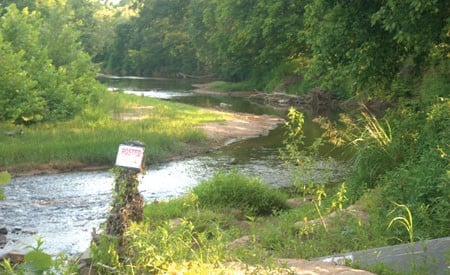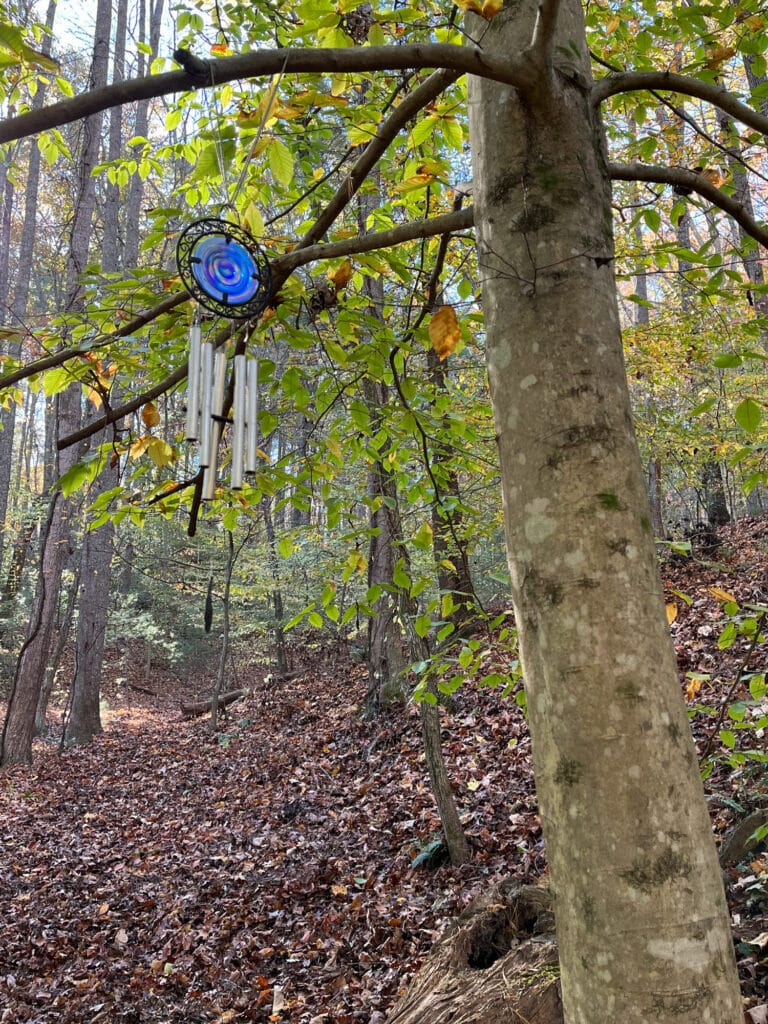Nearly all of us enjoy public waterways—and very few of us ever stop to consider how those waterways became public in the first place. In most cases, beyond picking up a state fishing license, we don’t give much thought to who owns the river (and why) at all. Unfortunately, anglers from Montana to North Carolina and Idaho to Pennsylvania are discovering that ignorance of riparian water rights is no excuse for violating them. The trouble is that “the law” can be as slippery as an eel. In fact, there’s no one “law” that dictates water rights: From state to state, laws concerning private ownership of, public access to, and public use of navigable and non-navigable waters differ. As confusion mounts, so too are the number of unpleasant run-ins between river lovers and riparian landowners. And what begins as a nasty spat all too often ends in court.
The King’s River
How bad can it be? Very. Consider sleepy Culpeper County, Virginia, where for years riparian landowners, county residents, and state officials have bitterly disputed who may enjoy certain sections of the bucolic Hazel River. On one side of the conflict are three families, two of whom are related by marriage.
These families argue that the low-water bridge area near Monumental Mills attracts the community’s unsavory elements, who take advantage of the seclusion to litter, copulate, and deal drugs; and that prolific trespassing keeps them from being able to enjoy their riparian property. In 2005, the riparian landowning families told Gary Close, then-Commonwealth’s Attorney for Culpeper County, that they possessed a Crown grant to the property—a royal deed, issued by the King of England in the 18th century, that ensured that they alone owned both the banks and the bottom of that section of the Hazel River.
This was a plausible claim. As an English colony, Virginia was settled with many such Crown grants. Indeed, at one time nearly all of Culpeper County was part of such a grant. In 1802, however, the Virginia General Assembly passed a law stipulating that all land under water that was not previously conveyed would henceforth be held by the Commonwealth in trust for the public. These riparian landowners argued that because their land was conveyed before 1802, the law didn’t apply to their property.
Close concurred with the families, and on September 29th 2005, he wrote a five page letter to then-Sheriff Lee Hart concluding with “My office will prosecute all trespass warrants issued by your deputies whether on the banks of the rivers in the low water bridge area or upon the surface of the rivers” [emphasis added]. Unfortunately, Close was dead wrong: His directive flew in the face of both state and federal laws. Naturally the now-infamous letter shocked the community and contributed to the acrimonious public discourse that exists to this day.
Sheriff Hart did a little legwork himself—including soliciting advice from then-Attorney General Bob McDonnell (now Virginia’s governor)—and came to a very different conclusion. On Feb 15th, 2006 Hart wrote Close about a meeting with representatives from the Virginia Department of Game and Inland Fisheries and the Virginia Marine Resource Commission to hammer out a resolution to the conflict. Close chose not to attend. After this meeting, Hart made it clear to Close that state law presumed that the rivers were owned by the state, and, if deemed navigable by the Army Corps of Engineers, were open to the public for their enjoyment; and that he had no intention of arresting citizens for simply enjoying the river. Hart agreed with the landowners that upland property (the dry land alongside the river’s edge) was indeed privately owned—and that trespassers on upland property could and should be prosecuted. However, citizens who enjoyed the Hazel River without leaving its riverbed certainly had a right to do so.
Emboldened by Close’s 2005 letter to Hart, riparian landowners immediately began confronting citizens who had long fished and canoed in the river. Landowners made hundreds of calls to the Culpeper County Sheriff’s Office to report trespassers—so many calls, in fact, that the low-water bridge across the Hazel river had to be given its own address to help dispatchers and other law-enforcement officials track the calls. Soon sheriff’s deputies found themselves caught in the middle of the dispute, with Sheriff Hart on one side arguing that citizens had every right to use the river, and Mr. Close on the other side demanding that anyone in the river near the low-water bridge be cited for trespassing. Deputies spent untold hours responding to and patrolling the low-water bridge area in an effort to keep the peace.
A Valid Claim
Not surprising given Virginia’s colonial past, numerous Crown grants are extant in the Commonwealth—and some involve such popular and venerable rivers as the James, New, Shenandoah, York, Cowpasture, and Jackson. Indeed, the Commonwealth of Virginia itself issued Commonwealth grants—more or less similar to a Crown grant—after the Revolutionary War.
Nevertheless, it is no small matter to get the Commonwealth to recognize one’s Crown grant. First, the riparian landowner who claims to own the riverbed must own the land on both sides of the river. Second, the contested area must be ruled on by a court of law. According to Brian Gottstein, Director of Communication for the Office of the Attorney General of Virginia, not even Virginia’s Attorney General has the authority to unilaterally recognize a Crown grant outside of court. The riparian landowners along the Hazel River didn’t own the land on both sides of the river, and at no time was their Crown grant adjudicated in court. As a result and as far as the Commonwealth was concerned, their claim of river bottom ownership was invalid. The landowners, however, had assumed that Mr. Close’s assessment of their situation was accurate—and had acted accordingly.
For the better part of five years, Culpeper County residents were swept up in this imbroglio: Sections of the Hazel River were essentially off-limits to anglers, swimmers, and canoeists—to folks who had enjoyed the river all of their lives. The acrimony escalated when, apparently as an ill-conceived joke, a resident set off a device commonly known as a salute cannon. The offending cannon was triggered on a roadway near the residence of one of the riparian landowners, and while it didn’t hurl a projectile, it did make a sound consistent with its name. The harassed landowners, weary of locals’ angry drive-by cursing and littering, felt rather less amused than frightened and threatened by the cannon going off so close to their home. They summoned the authorities, who soon arrested the practical jokester, a very well-liked individual who not long after found himself guilty of the crime. Suddenly no one was laughing.
The arrest and conviction of a popular county resident helped galvanize the community to demand a public meeting with Close and insist that he reexamine his position on the ownership of that section of the Hazel River. Locals did a bit of their own research, uncovering and producing evidence that they believed refuted Close’s legal opinion.
Upon reexamination, Close grudgingly admitted that he had been wrong. On July 29th, 2010, Close wrote to Sheriff Hart that with regard to a claim of Crown grant ownership on the Hazel, “no such registered river exists in Culpeper County.” He continued, “Therefore the public is presumed to the use and enjoyment of any river in or adjoining the county. The impact on the issuance of trespass warrants for the use of any river in Culpeper County is clear. No trespass warrants should be issued.” By this time, however, the damage had been done: Neighbor had turned against neighbor. Residents were so thoroughly confused by the issue that many simply refused to come back to the Hazel River. Others fumed that local and state leaders had done little or nothing to rectify the issue, choosing to ignore it until the matter had escalated out of control.
Virginia legislators have recently established a study group to examine the laws surrounding Crown grant ownership as it relates to river bottoms. Virginians eagerly await a decision that may bring clarity to this muddled, rancorous issue. Meanwhile, back on the Hazel River, the low-water bridge area is open to anglers, kayakers, and swimmers. But problems remain: One of the original three riparian landowners, citing his Crown grant, is preventing state workers from setting foot on his half of the riverbed to remove a dilapidated dam (at no cost to the landowner) which is delaying its removal. As a result plans for a canoe launch, a public parking lot, and other improvements to the river below the dam have been placed on hold.
Check out BRO online editor Jack Murray talking about the issue on Charlottesville’s Newsplex.
Beau Beasley (www.beaubeasley.com) is the author of Fly Fishing Virginia and an award-winning conservation writer who specializes in river access and use issues. He wishes to thank the riparian landowners, the Culpeper County Sheriff’s Office, and the citizens of Culpeper County for their assistance in researching this issue.








